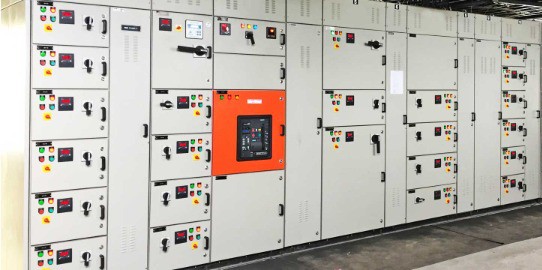What is Circuit Breaker
A circuit breaker is an essential electrical switching device designed to protect electrical circuits and equipment from damage caused by excessive current, faults, or overloads. Its primary function is to interrupt the flow of current in a circuit whenever a fault or abnormal condition occurs, preventing potential hazards such as electrical fires, equipment damage, and electrical shocks.
Circuit breakers consist of a switch mechanism that can be manually or automatically operated. When the current flowing through the circuit exceeds a predetermined threshold (known as the rated current or current-carrying capacity), the circuit breaker detects the overload or fault and automatically opens the circuit to interrupt the current flow. This action isolates the faulty part of the circuit, preventing further damage and ensuring the safety of the electrical system and connected devices.
Once the issue causing the excessive current is resolved, the circuit breaker can be reset, allowing the current to flow again. This makes circuit breakers reusable and a preferred choice over fuses, which need to be replaced after they “blow” or melt during an overload.
Circuit breakers are commonly used in industrial, commercial, and residential applications to protect electrical circuits for machinery, appliances, motors, lighting, and other electrical devices. They play a crucial role in maintaining electrical safety, system reliability, and efficient power distribution.
Utilization of Circuit breakers
Shunt Release (SR) / Opening Coil
Shunt Release when energized opens the breaker instantaneously. It allows the opening of the Circuit Breaker by means of an electrical command. Operation of the release is guaranteed for a voltage between 70% and 110% of the rated power supply voltage value, both in AC & DC
Closing Release (CR)
Closing Release remotely closes the Circuit Breaker if the spring mechanism is already charged. Closing Releases in Air-circuit breakers come with an inbuilt Electrical anti-pumping feature. Inbuilt electrical anti#pumping feature prevents auto-reclosing of Circuit Breaker on faults. Anti-pumping relay cancels the persistent closing signal after the successful completion of the closing operation.
Under‐voltage Release (UVR)
The Undervoltage Release causes the Circuit Breaker to open if the operational voltage falls to a value between 35% and 70% of its rated voltage or is not applied. UV Release mechanically locks the closing of the breaker & it makes it impossible to close the Circuit breaker, either manually or electrically.
The Circuit breaker can be closed with an operation voltage of 85-110% of its rated value. UV Release can be used for monitoring the voltage in the primary (power circuit) or secondary (control circuits) circuits or can be used for electrical interlocking schemes (for DG synchronization, paralleling of transformers, etc). In order to avoid the nuisance tripping of the circuit breaker during short voltage dips, UV release comes with the UV-delay module. Operation of UVR can be delayed between 0 to 5 secs. in steps of 0-1-3-5 sec.
Remarks
Standard Electrically operated ACB includes ECD (240V AC), CR (240V AC) & SR (240V AC OR 24V DC)







